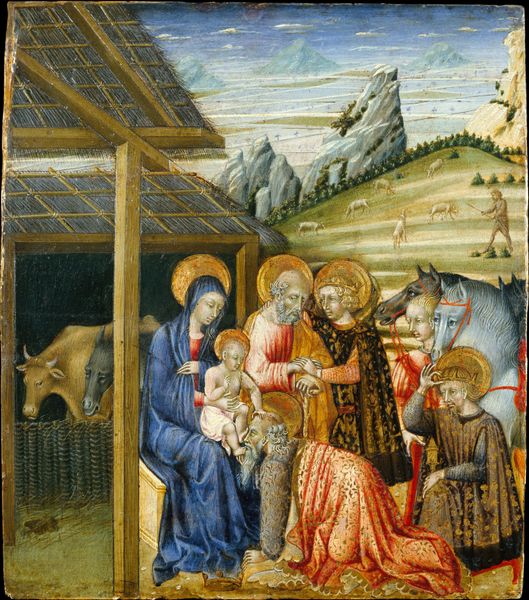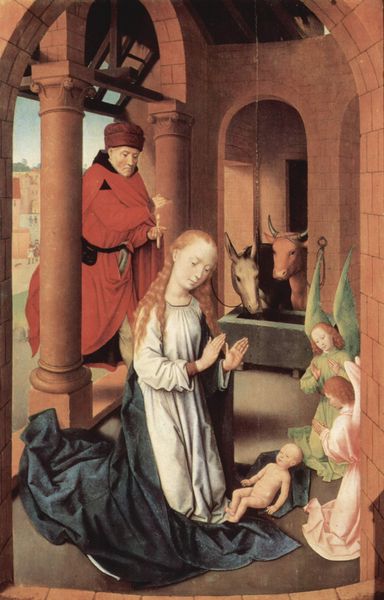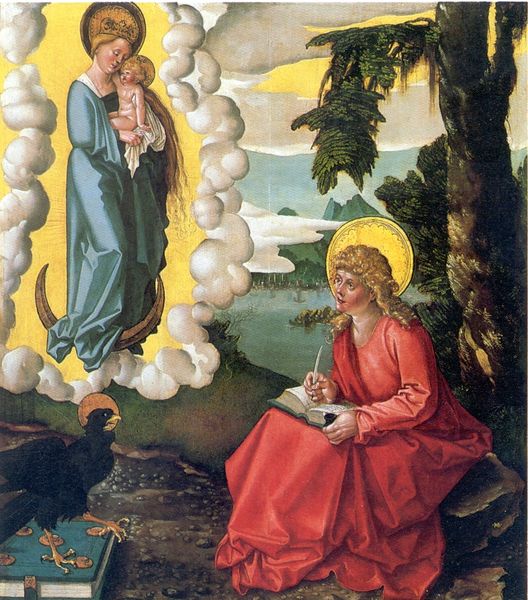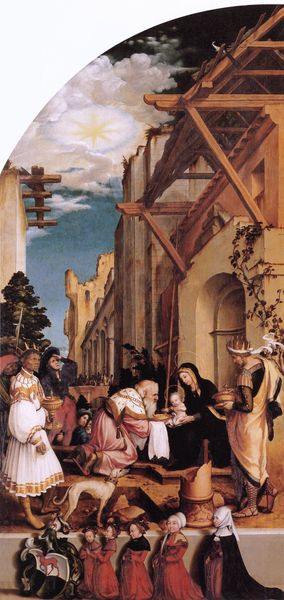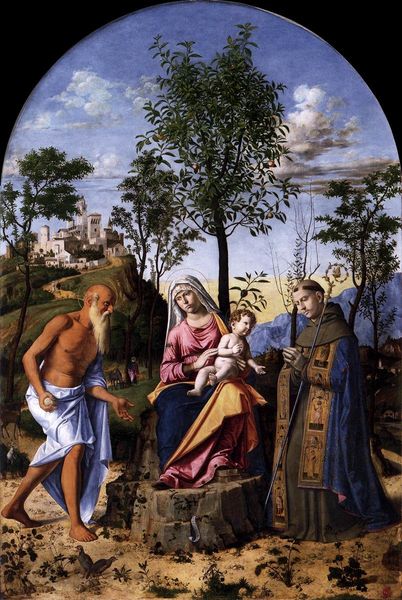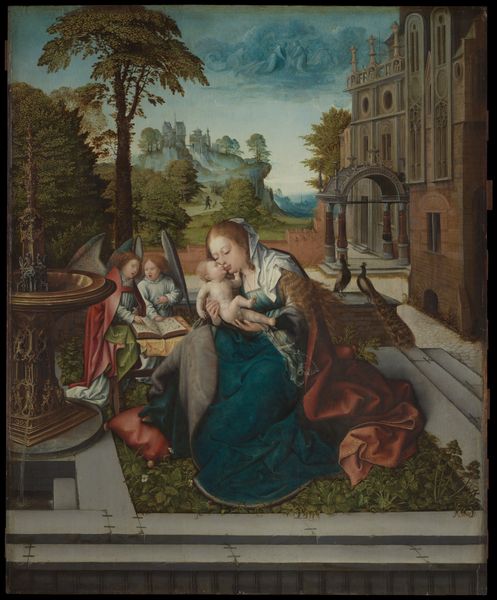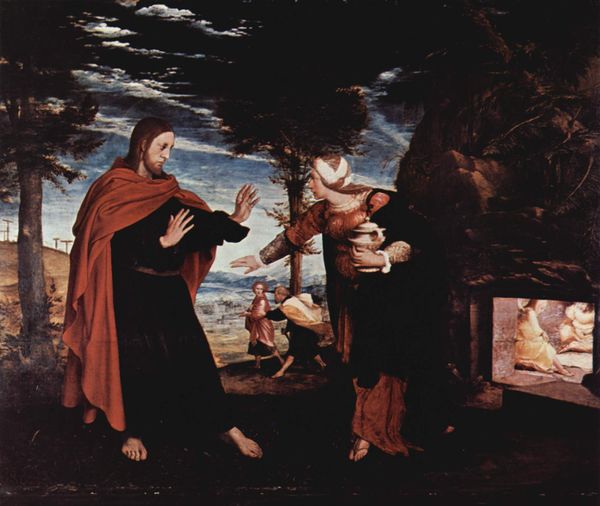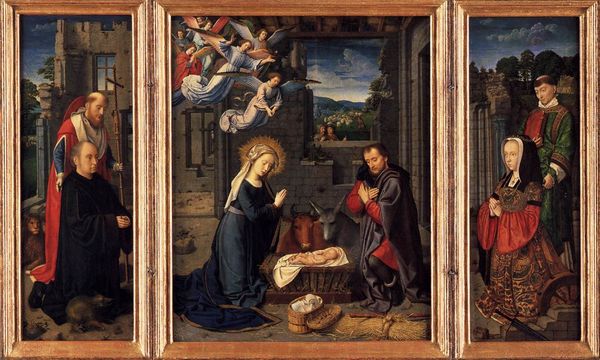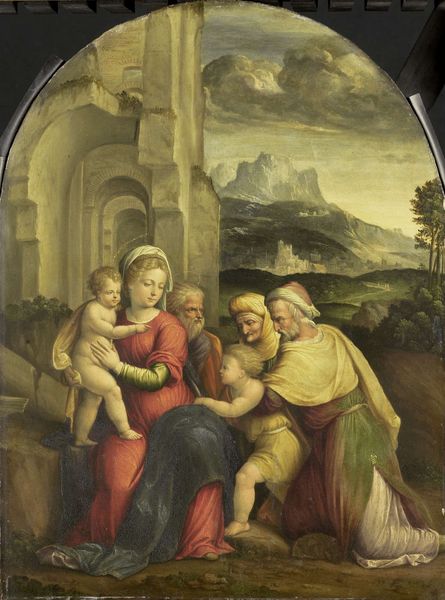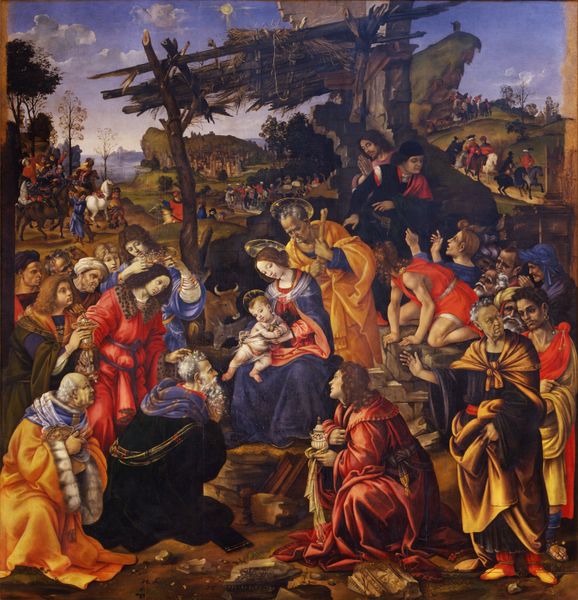
painting, oil-paint
#
narrative-art
#
painting
#
oil-paint
#
landscape
#
figuration
#
oil painting
#
history-painting
#
italian-renaissance
#
early-renaissance
Dimensions: Panel: 25.6 × 22 cm (10 1/8 × 8 11/16 in.); Painted Surface: 25.2 × 21.8 cm (9 15/16 × 8 1/2 in.); With Frame: 30.5 × 25.4 cm (12 × 10 in.)
Copyright: Public Domain
Curator: Let's discuss Bernardino Butinone’s “The Flight into Egypt,” painted around 1485 and currently held here at the Art Institute. What's your initial take? Editor: Austere, almost unsettling. The landscape dominates; the holy family feels rather small and vulnerable against such a backdrop. The somewhat primitive perspective amplifies that unease, doesn't it? Curator: Precisely! Butinone is less concerned with perfect perspective than with creating a spiritually resonant space. Observe the painting's symmetrical organization, the vertical emphasis of the trees framing the central figures of Mary and Jesus. He deliberately uses flattened perspective to foreground the key subject of this devotional narrative. Editor: The choice to diminish the figures certainly deviates from typical Renaissance exaltation. Isn’t he hinting at the precarious nature of refuge, the challenges faced by displaced families even then? It feels poignant. It reframes the narrative to become an emblem of other similar narratives throughout history and of migrants today. Curator: The colors, too, contribute to its devotional atmosphere. Note the carefully balanced reds, blues, and browns. The artist masterfully contrasts Mary's somber dark attire with the vibrancy of the angel's robe, drawing your eye and accentuating the ethereal presence guiding their journey. He also uses symmetry here, positioning this scene centrally while cities lie far off in either corner. Editor: But what about the golden detail, these 'corrugated' forms decorating the tree trunks? Are they solely ornamental, or do they convey other symbolic meaning? Their rigidity, against the vulnerable traveling family, creates visual tension, does it not? Curator: An excellent question! It’s characteristic of the artist's distinct mannerisms. It heightens the composition, which is so typical of Early Renaissance art's emphasis on detail and ornament as much as illusion. Editor: Thank you for illuminating those connections. Reflecting upon the work, the way Butinone merged aesthetic forms with social contexts of displacement has created more appreciation for "The Flight into Egypt," here. Curator: And considering his skillful composition within early Renaissance conventions, it presents much to admire within its balanced design.
Comments
No comments
Be the first to comment and join the conversation on the ultimate creative platform.
